9 Grouping and clustering competencies
The grouping and clustering of competencies can take a variety of forms, and often this is done according to an occupation or a job role. That is not to say that there is only one way to cluster groups of competencies, and creating structures that allow for competencies to be applied across different industries, occupations, and roles is important when designing a common competency framework. Competencies and groups of competencies can also be used for the purposes of designing training and credentialing, which may or may not align directly with the needs of a specific workplace, occupation, or sector.
Some different approaches that are commonly used include:
- Competencies grouped by theme. This might include categorizing competencies into main competency areas, such as Interpersonal Skills, Workplace Safety, Computer Skills, Project Management, etc.
- Competencies grouped by workplace and/or job role. Often this will include common cross-functional competencies (ones that all people within an organization need) and technical or functional competencies that apply to specific work activities and job roles.
- Competencies grouped by occupation. This is common when frameworks have been developed for the purposes of certification or licensing. This may also include sub-groupings by theme or job role in occupations where there is a lot of specialization.
- Competencies grouped by industry or sector. This approach is similar to the way competencies are grouped for a workplace or for job roles, but on a much larger scale. These frameworks often have common shared groupings of competencies that apply across occupations but also specific groupings of competencies that apply to an occupation or occupations within a sector.
There is no universal approach to grouping competencies, and most large frameworks will have competencies categorized in multiple ways. For example, a framework for an occupation may also break down the competencies used in that occupation according to themes or groupings of related competencies. Large competency frameworks often rely on the use of metadata such as keywords and tags to cross-reference information, but also rely on technology such as a web-based interface connected to a database or library of competencies. What becomes increasingly important, especially the larger a framework, is that the information can be tracked and managed effectively, and that individual competencies are viewed as building blocks for larger structures.
To understand how competencies act as a building blocks, think of the difference between a jigsaw puzzle and a Lego® set. Both are comprised of pieces that are designed to fit together to form a larger whole, but a jigsaw puzzle only has one possible combination. A Lego® set, even if purchased to assemble a specific project, has pieces that can be disassembled and rearranged in an infinite number of ways to form new structures.
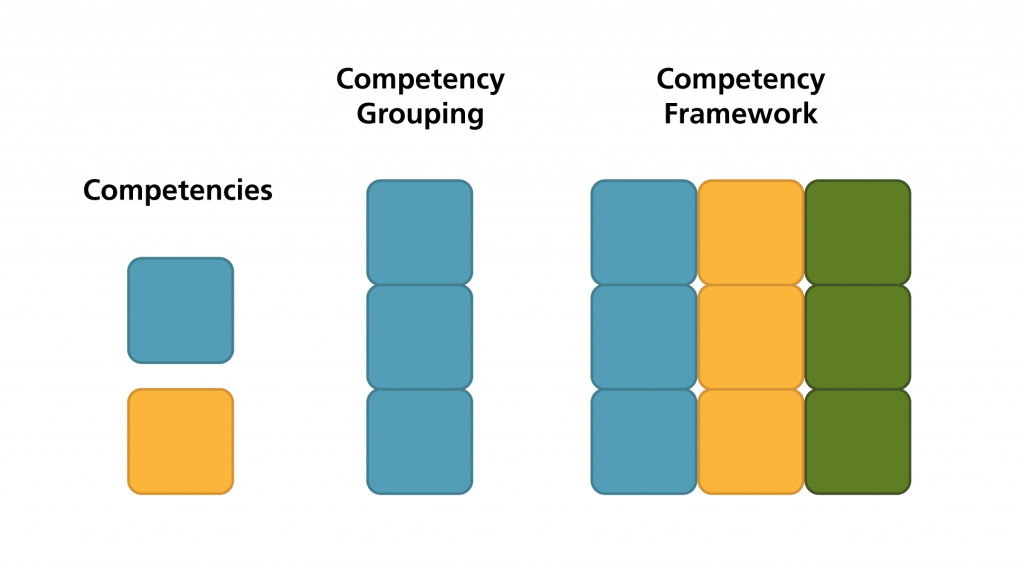
Here is an example of related competencies, and how they can be viewed as a group covering one topic; a larger group with subdivisions for multiple topics; as a group split into two separate competency units aligned with different roles and levels of responsibility; or as an individual competency. This group of competencies, arranged by theme, might apply to multiple job roles or to an occupation or sector as well.
Example 1: As a group of related competencies
This example shows all of the workplace safety competencies within a framework.
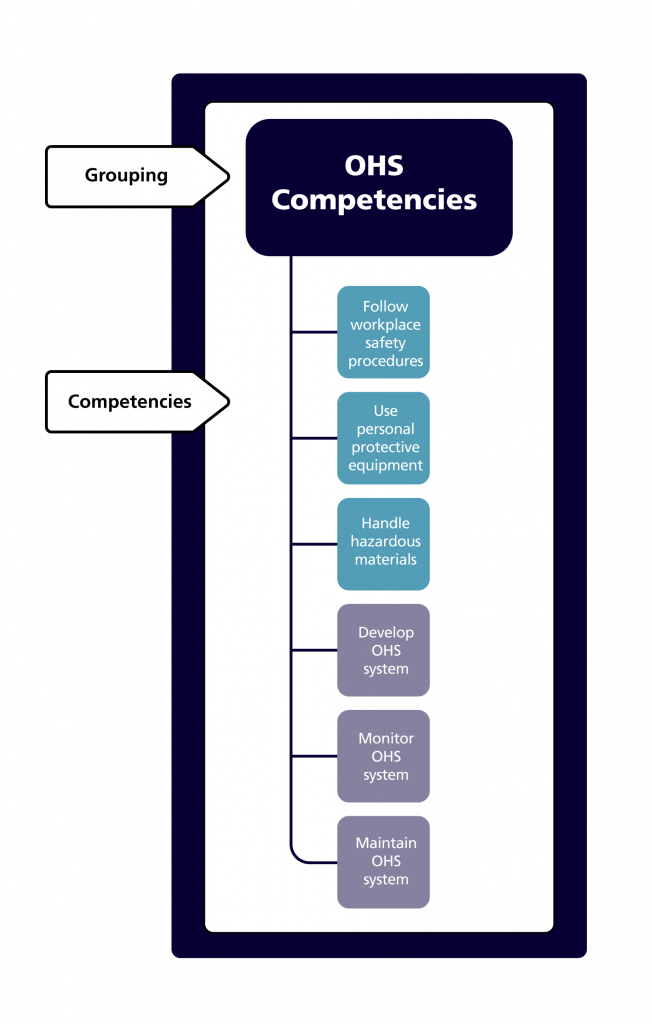
Example 2: Competency groupings rolled up into larger themes or categories
This example shows how the Workplace Safety competencies might be a part of a larger category or theme within a framework, such as common core competencies that all workers must have, regardless of job role or occupation.
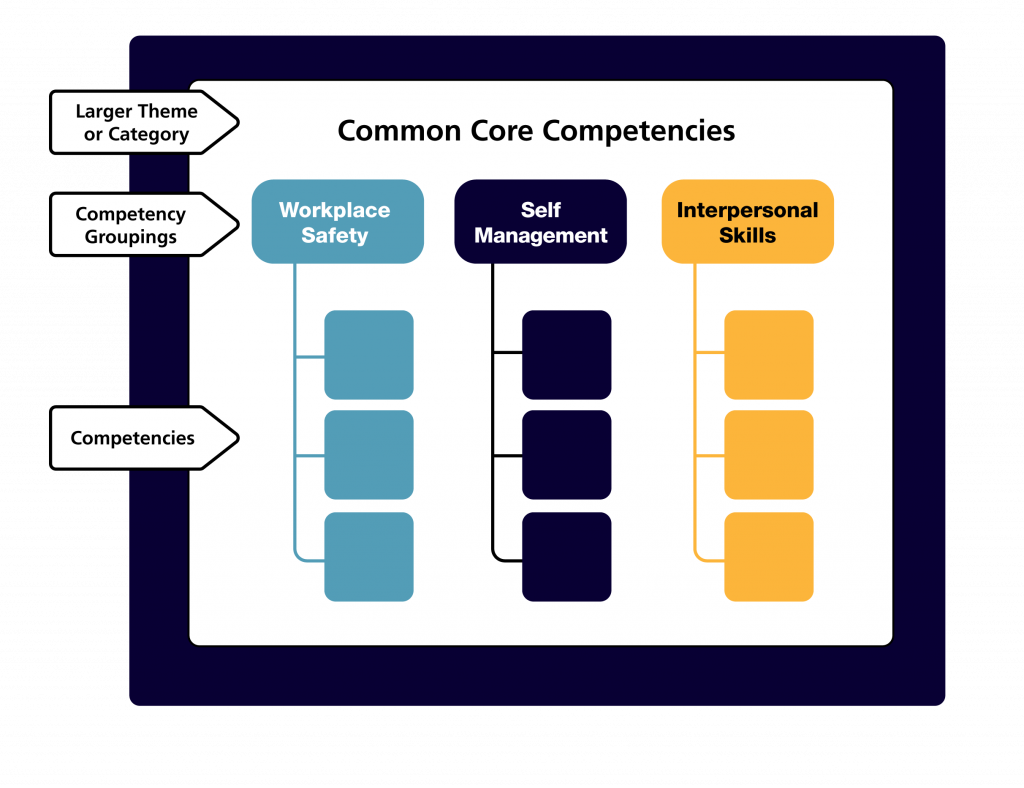
Example 3: As a smaller grouping (units) related to different job roles
This example separates out the workplace safety competencies that apply to all workers, and those that may only apply to managers and others responsible for the workplace’s safety system.
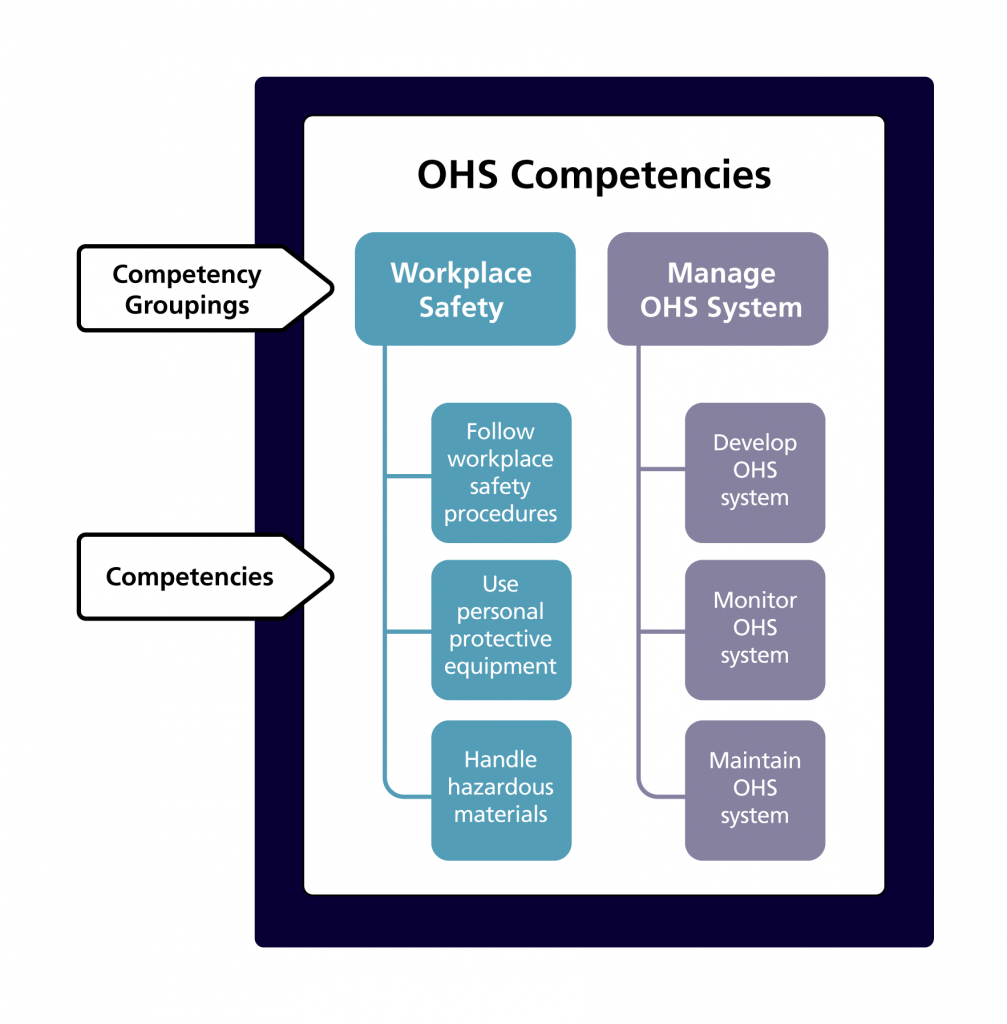
Example 4: One Competency in detail
Here’s an example of one competency from the previous list in detail, including the expected behaviours (performance criteria), supporting knowledge and skills, and some key terms and definitions.
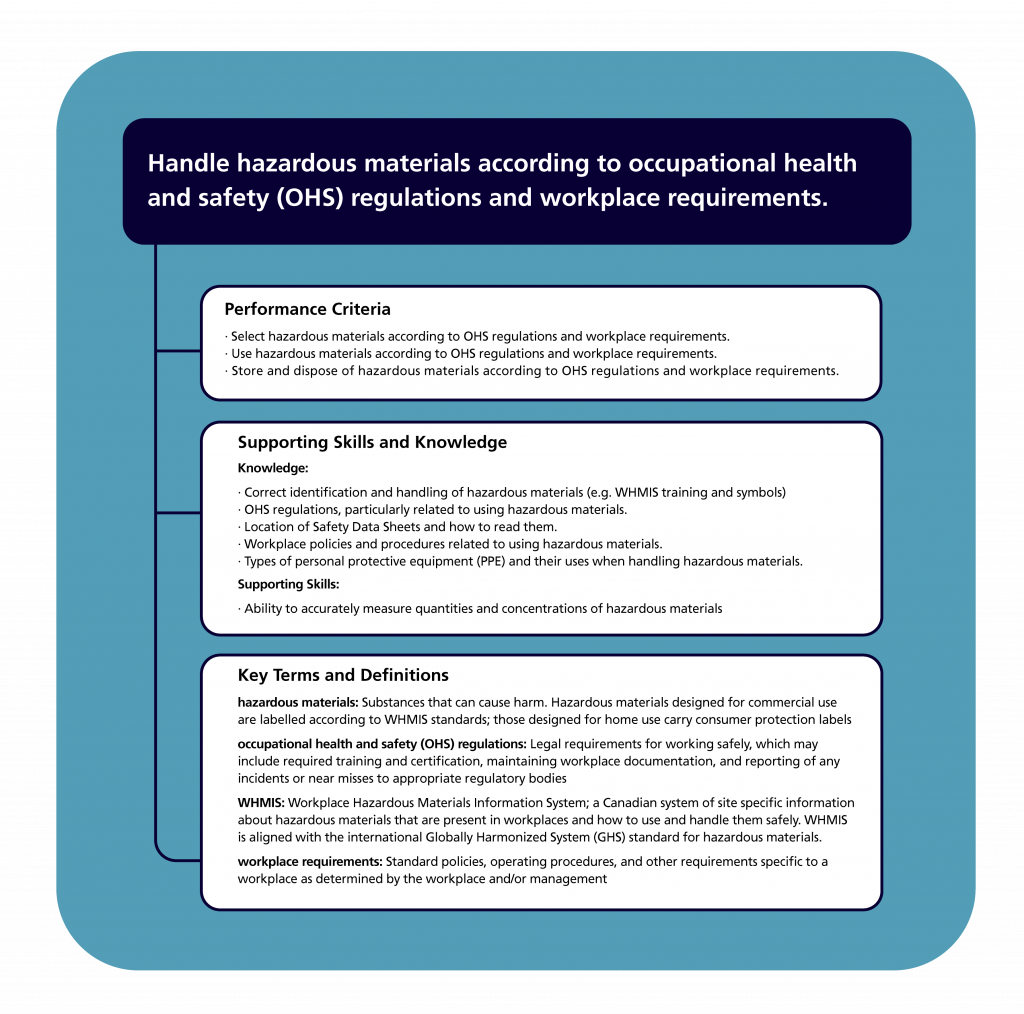
Adding Context and Examples:
Descriptions of context with accompanying examples may appear in a framework as additional information about a group of competencies or a specific competency, depending on the structure and intended use of the framework. This can be helpful in highlighting how the competencies are applied in the real world, identify any new and emerging trends, or to help those in designing realistic ways to assess the competency or group of competencies. For example, safety competencies are often evaluated in conjunction with other activities, as they are used regularly and for a number of different tasks.
Examples:
(This applies to the whole group of workplace safety competencies.)
- Working safely is critical to all workplaces. There are different requirements and regulations in place for employees and employers, but everyone has a responsibility to contribute to a safe workplace environment.
(These apply specifically to using hazardous materials.)
- Workers may use hazardous materials for task such as cleaning and sanitizing, and must do so safely. This may include mixing or diluting concentrated chemicals according to the instructions provided by the supplier.
- Supervisors and managers are also responsible for ensuring that everyone has the proper training and knows where to find specific information on the safe use of each hazardous material found in the workplace.
Metadata is data that describes or summarizes other data. It provides information about a certain item's content. This may include tags or key words that are attached to a descriptor and therefore can by searched, found easily and are machine readable.

